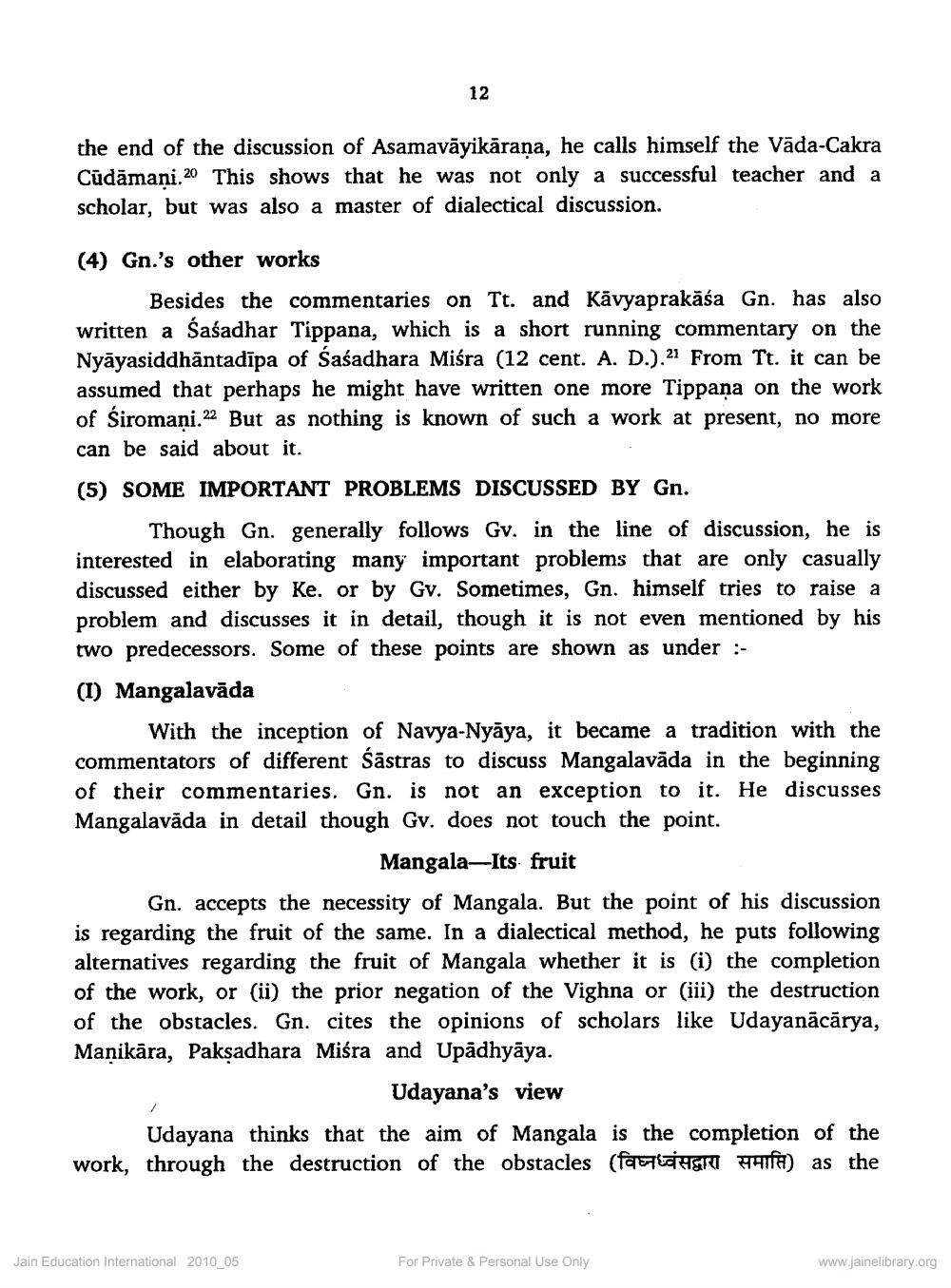________________
12
the end of the discussion of Asamavāyikarana, he calls himself the Vāda-Cakra Cūdāmani.20 This shows that he was not only a successful teacher and a scholar, but was also a master of dialectical discussion.
(4) Gn.'s other works
Besides the commentaries on Tt. and Kāvyaprakāśa Gn. has also written a Śaśadhar Tippana, which is a short running commentary on the Nyāyasiddhāntadīpa of Śaśadhara Miśra (12 cent. A. D.).21 From Tt. it can be assumed that perhaps he might have written one more Tippana on the work
Siromani.22 But as nothing is known of such a work at present, no more can be said about it. (5) SOME IMPORTANT PROBLEMS DISCUSSED BY Gn.
Though Gn. generally follows Gv. in the line of discussion, he is interested in elaborating many important problems that are only casually discussed either by Ke. or by Gv. Sometimes, Gn. himself tries to raise a problem and discusses it in detail, though it is not even mentioned by his two predecessors. Some of these points are shown as under :(1) Mangalavāda
With the inception of Navya-Nyāya, it became a tradition with the commentators of different Šāstras to discuss Mangalavāda in the beginning of their commentaries. Gn. is not an exception to it. He discusses Mangalavāda in detail though Gv. does not touch the point.
Mangala-Its fruit
Gn. accepts the necessity of Mangala. But the point of his discussion is regarding the fruit of the same. In a dialectical method, he puts following alternatives regarding the fruit of Mangala whether it is (i) the completion of the work, or (ii) the prior negation of the Vighna or (iii) the destruction of the obstacles. Gn. cites the opinions of scholars like Udayanācārya, Manikāra, Pakşadhara Miśra and Upadhyāya.
Udayana's view
Udayana thinks that the aim of Mangala is the completion of the work, through the destruction of the obstacles (fabHEKI HIh) as the
Jain Education International 2010_05
For Private & Personal Use Only
www.jainelibrary.org




